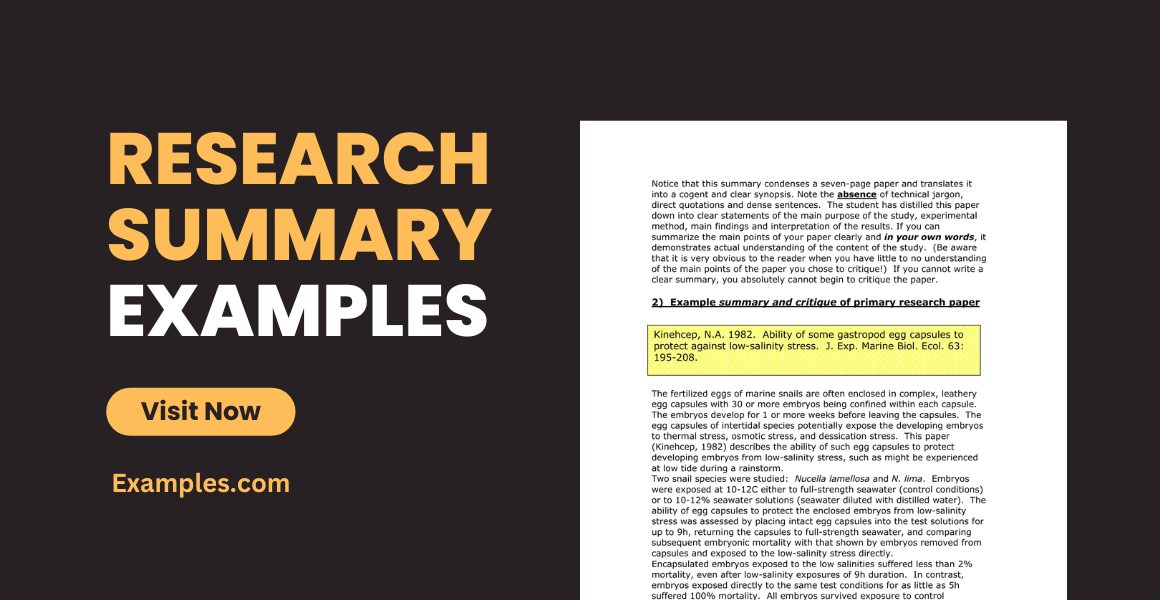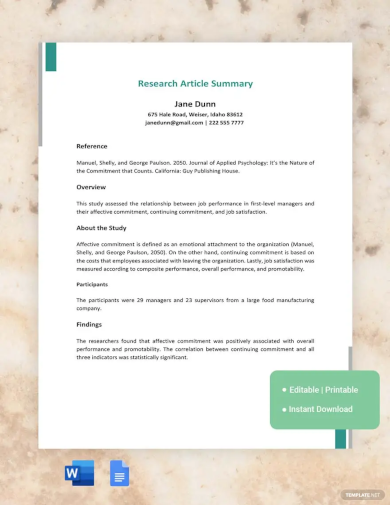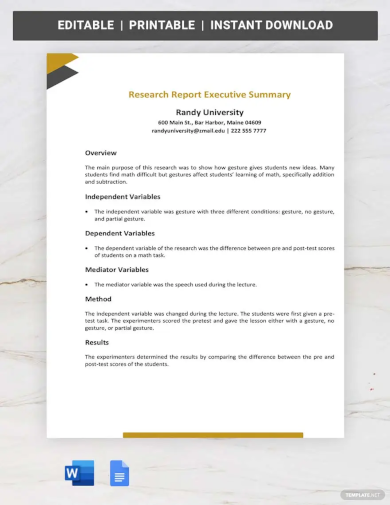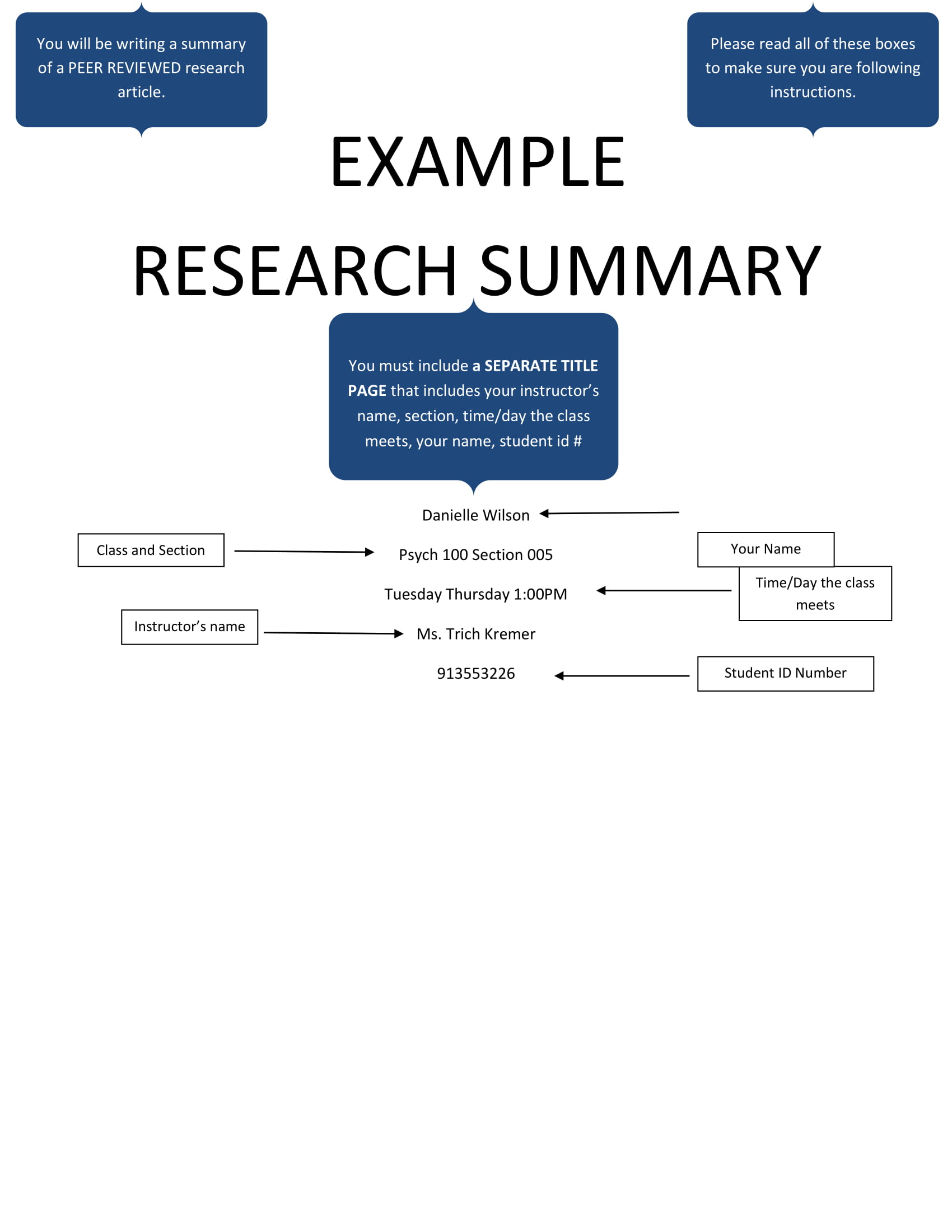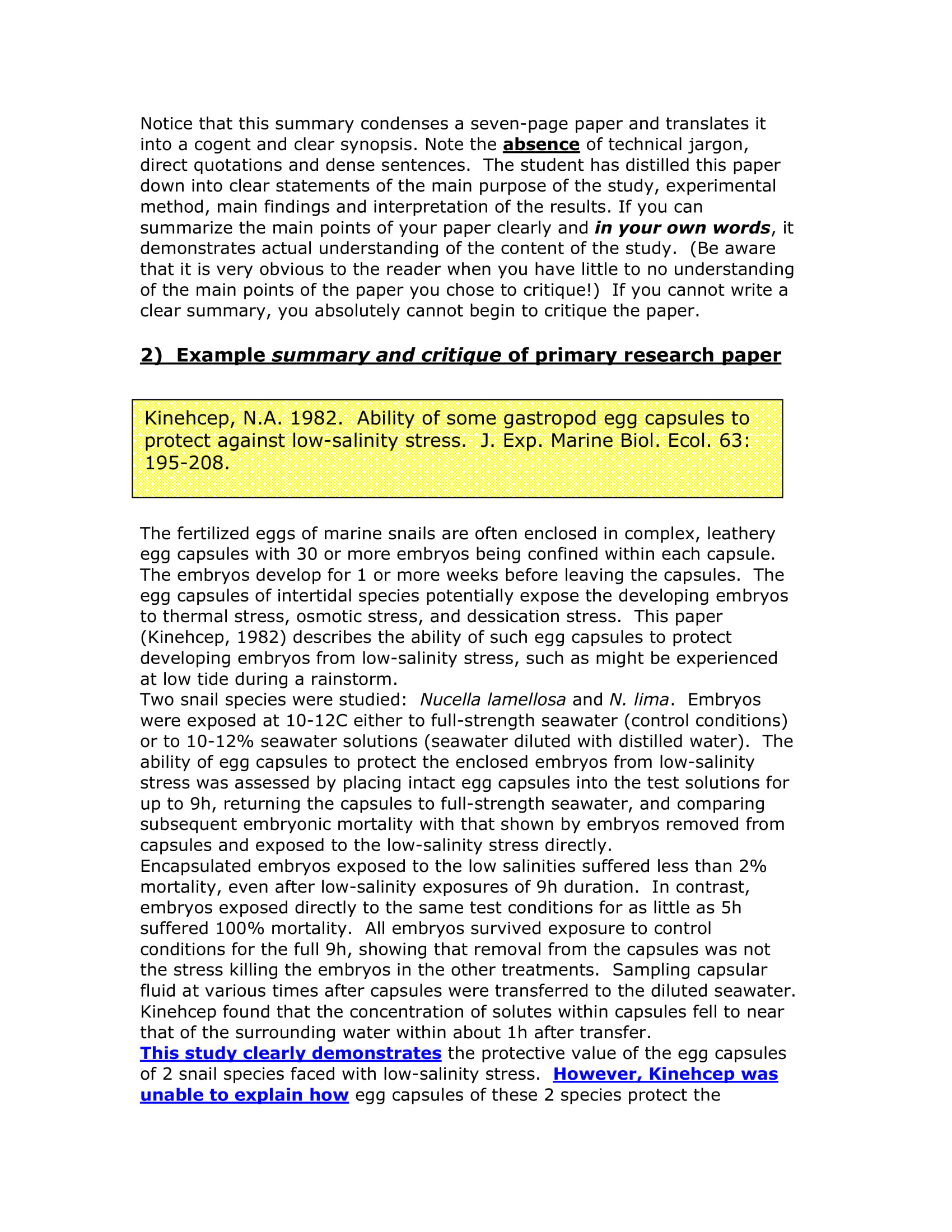5+ Research Summary Examples
A research paper analyzes a perspective or argues a point. It is an expanded essay based on your interpretation, evaluation or argument about a certain topic.
According to Sunny Empire State College, “When you write a research paper you build upon what you know about the subject and make a deliberate attempt to find out what experts know. A research paper involves surveying a field of knowledge in order to find the best possible information in that field.” Whatever type of research paper you choose to write, it should present your own ideas backed with others’ (especially experts on the field) information and data.
Every research paper has a research summary. A research summary is a brief overview of what the whole research is about. It is a professional piece of writing that describes your research to the readers. It concisely yet perfectly captures the essence of the research as a whole. You may also see What Should Be in an Executive Summary of a Report?

Fundamentals of a Research Summary
Having a good template for a research summary is nothing if you don’t know its importance and basic function. Before you start writing your research summary, you should first know its fundamentals on the areas you need to pay attention to such as its content, style and organization.
- The content of your research summary must briefly discuss the techniques and tools used in the research and the importance of the research as a whole. Explain how the research can be of benefit for the people.
- To organize your research summary, each topic must be discussed in separate paragraphs. How you came up with a factual research must be briefly explained in a separate paragraph.
- If you have a lengthy research paper, try not to write not more than 10% of the entire paper. If it’s not as lengthy, you should not write more than 300 words in your summary.
However, rules may vary according to your research professor’s standards. This is just the basic fundamentals on how to write your research summary. Also see Thesis Outline Examples
How to Write a Research Summary
It is apparent that a research summary is a condensed version of the main idea of your research paper. Because of this, it is advised that the summary of your paper is written after you are done with your entire research. This is to ensure that all the added information in your research can be written in your summary as well and all of those that removed can be edited out. Here are a few steps on how to write a research summary:
Read your paper
It should be a fact you should know beforehand; the importance of reading your entire research paper thoroughly to write an effective research summary. Along the way, take notes of the important details and key findings that you want to highlight in your paper. This will help you organize your summary better. Remember that your research summary is a mini-paper of your study and it should contain the main ideas of your entire research.
Write a draft
For your first draft, focus on the content rather than the length of your summary. Your draft is your first outline on what to include in the final summary. Writing a draft ensures you write a clear, thorough and coherent summary of your research paper. Also see How to Write a Rough Outline
Identify main points
Within your research paper, you must identify the major points that will encourage prospective readers to go through your research paper. These major points must thoroughly and completely explain what the paper is trying to convey.
Separate sections
Identify the differences of the main section in your paper. Write a few sentences describing the main ideas of each section. In short, you should be able to present and thoroughly describe what each main section is focused on. It should have these basic sections:
- Introduction, brief opening statement
- Purpose of the study
- Data gathering method
- Summary of findings
- Description of recommendations with actual justification.
Combine Information
All the information you have gathered must be then used to make your summary. Remember that your summary is just an overview of your research paper as a whole. It should be not be more than 10% of your whole paper. Also see 5 Summary Writing Examples and Samples
Making The First Draft
After establishing the basic way of writing a research summary, it is a must to write a first draft. It should follow the flow of the original paper. Here’s a few steps on how to make a first draft:
First, state the research question in the introduction of your summary. This holds the ground as to the summary’s direction. Provide an explanation why your research is interesting and how it can help your target recipients.
Second, state the hypothesis you wish to prove. This will help you and your readers stay grounded on the topic at hand.
Third, briefly discuss the methodology used in your research. Discuss and describe the procedure, materials, participants, design, etc. The analysis of your data must also be included. You may also see How to Write a Successful Thesis Proposal
Fourth, describe the results and significance of your research. And lastly, briefly discuss the key implications of your research. The results and its interpretation should directly coincide with your hypothesis.

Editing your Research Summary
A research paper is a formal piece of writing. Your summary should be tailored to your expected readers. Say for example the prospective readers are your classmates, so the style of your paper should be clearly understood by them.
Eliminate wordiness. Avoid using unnecessary adjectives and adverbs. Write in a way it would be easier for your readers to understand. It is common for research papers to establish a word count. Avoid elongating your sentences when it has shorter versions.
Being vague in describing and explaining the points of your paper might lead to confusion in your readers part. Use specific, concrete language when presenting results. Use reliable and specific examples and references as well. You should also use scientifically accurate language to help support your claims. Avoid informal words and adjectives to describe the results of your research.
Paraphrase the information you want to include in your research paper. Direct quoting the information you have read from a different source is not oftenly used in formal writings. To give the exact credit for the information you paraphrased, follow the citation format required by your professor.
Reread your paper and let others read it as well. This way minor errors you were not able to notice can be quickly pointed out and corrected.
Research Summary Writing Tips
Length
Your research summary should not be more than 10 pages long or not more than 10% of your original document. This keeps your research summary concise and compact. It should be short enough for your readers to read through but long enough for you to clearly explain your study.
Copy and paste
Avoid simply copy and pasting different parts of your paper into your summary. You should paraphrase parts that you want to include. As most research advisers read through all of your paper, it can easily be identified if you have copy-pasted parts from your research and might give you a bad grade.
Consider the readers
Although not a requirement from your professor, catering your summary to what the readers need is sometimes required. As some studies are given out to different influential people in the field, writing a summary that caters to the readers’ necessities might be required.
Research Article Summary Template
Research Report Executive Summary Template
Research Summary Example
Research Summary Sample
Research Writing Summary Tips (continuation)
Clarity and organization
One of the common mistakes in writing a research is publishing an unclear and unpolished summary. Bear in mind that your readers are likely reading about the topic of your research for the first time, avoid unclear and uncertain explanations and a disorganized summary.
Use strong and positive language
Use precise and strong words to help strengthen the foundation of your summary. Your summary should be able to stand alone despite it being a part of the research paper. Once you have convinced your readers with the recommendations regarding the topic of your paper, the readers should be able to find concrete evidence and explanations within your summary. Avoid pleas and biased statements in your summary, but make sure you are able to relay the sense of urgency for the recommendations you have given.
Divide into parts
To make things easier for you, divide your paper into different sections and headings, much like creating an outline. With this in mind, every point should be explained limited to its essence. In this way, you avoid writing too much information about your paper in your summary.


